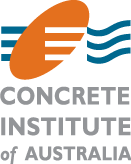A Current Practice Note is a document presenting the latest knowledge and information on a topic. It is generally a short document of around 8-12 pages and is referenced by the Concrete Institute of Australia as a CPN document.
The Concrete Institute of Australia has 11 Current Practice Notes that are available for free to Members and include:
CPN 17 – The Use of Galvanised Reinforcement in Concrete
This Practice Note provides technical information on the characteristics and use of galvanised normal reinforcing steel so that decisions can be made on when and how to use galvanised reinforcement. It provides guidelines on the specifications and practices involved in its use. Factors determining the durability of reinforced concrete are briefly considered. The nature of the galvanising treatment is clearly described and the method of galvanising reinforcing steel classified as Normal in Clause 5.2 of AS/NZS 4671. The use of galvanised reinforcing steels in reinforced concrete construction is also discussed.
CPN 22 – Non-destructive Testing of Concrete
This Practice Note presents non-destructive concrete tests that are commonly used within the Australian construction industry, that have been found to be relatively easy to perform, and provide quick, meaningful and accurate information. It provides the scope of the test, a brief description of the methods and procedures used, and the major advantages, disadvantages, difficulties, reliability, variability and precision associated with the test method.
CPN 24 – Design of Joints in Concrete Structures
This Practice Note covers the design of joints in concrete. It notes how most concrete structures and members are subject to permanent contraction movements due to early age volume changes, drying shrinkage, carbonation and creep. They are also subject to transient movements and rotations caused by fluctuations in humidity and temperature and the application of loads to the structure. In concrete that is restrained from freely contracting, shrinkage and temperature movements will induce tensile stresses and may cause unacceptable cracking. Proper joint design is required to ensure the load-carrying capacity and serviceability of the structure or member is maintained.
CPN 25 – Fly Ash and its Use in Concrete
This Practice Note provides information on the use of fly ash in Australia. It includes basic information on the local fly ash available in Australia, the important properties of fly ash, and the Australian Standards relating to the properties of fly ash and its use in concrete. It also covers the characteristics of concrete containing fly ash and its various applications.
CPN 26 – Ground Granulated Iron Blast Furnace Slag and Its Use in Concrete
This Practice Note provides information on the use of ground granulated blast furnace slag (GGBFS) in Australia. It includes basic information on the GGBFS available in Australia, the important properties of GGBFS, and the Australian Standards relating to the properties of GGBFS and its use in concrete. It also covers the characteristics of concrete containing GGBFS as a cement replacement.
CPN 27 – Amorphous Silica and Its Use in Concrete
This Practice Note provides information on the use of amorphous silica in Australia. It outlines the characteristics and design consideration for amorphous silica. Details on the specifications are included and the properties are given in three categories: physical properties, durability characteristics and fresh-concrete properties. Special requirements for handling amorphous silica and placing, curing and finishing amorphous silica concretes are also included.
CPN 28 – Watertight Concrete Structures
This Practice Note outlines the important considerations that need to be addressed relating to aspects of design and construction of watertight concrete structures. To achieve watertight concrete structures that are suitable for the service conditions requires the synthesis of appropriate material selection and mix design, adequate structural design, detailing and high standards of construction techniques and practices. All of these aspects must be adequately dealt with simultaneously to achieve a watertight structure.
CPN 29 – Prestressed Concrete Anchorage Zones
This Practice Note covers post-tensioned systems where the anchorage component is usually an external steel bearing plate or an embedded steel casting, with suitable lock-off device which transfers prestressing force to the concrete by direct bearing. In a pre-tensioned system, the transfer of these forces is by bond along individual cables at their ends. It is in this highly stressed zone of concrete immediately behind the anchorage, called the anchorage zone, that a complex three-dimensional interaction of stresses occurs as the load is transformed to a two-dimensional direct stress at some distance remote from the anchorage.
CPN 30 – Slab Edge Dampness
This Practice Note covers how slab edge dampness is a condition related to the serviceability of a concrete raft footing. It notes that a major visible symptom of this condition is areas of dampness (sometimes with efflorescence) on the slab floor internally, adjacent the perimeter walls and on the exposed edge of the footing, externally. In areas with saline soils or where saline subfloor fills have been used, efflorescence and ‘salt attack’ of the concrete surfaces usually follows.
CPN 33 – Compaction of Concrete Using Immersion and Surface Vibrators
This Practice Note details the two main reasons why concrete is compacted – to remove any voids in the concrete and to obtain the maximum strength and density of the concrete in place, and to obtain complete contact between the concrete with the formwork and the surface of the reinforcing steel. It is generally accepted that 5% voids in the concrete can lower the concrete strength by as much as 30%.
CPN 35 – Fibres in Concrete
This Practice Note discusses the use of fibres to reinforce Portland-cement based concretes or mortars and specifically excludes fibres used in the production of fibre cement sheeting products. In this context, the matrix to which fibres are added comprises graded aggregates (from fine sands to a combination of coarse sands and coarse aggregates), a binder (any combination of ordinary Portland cement, fly ash, slag and silica fume) and suitable admixtures.
